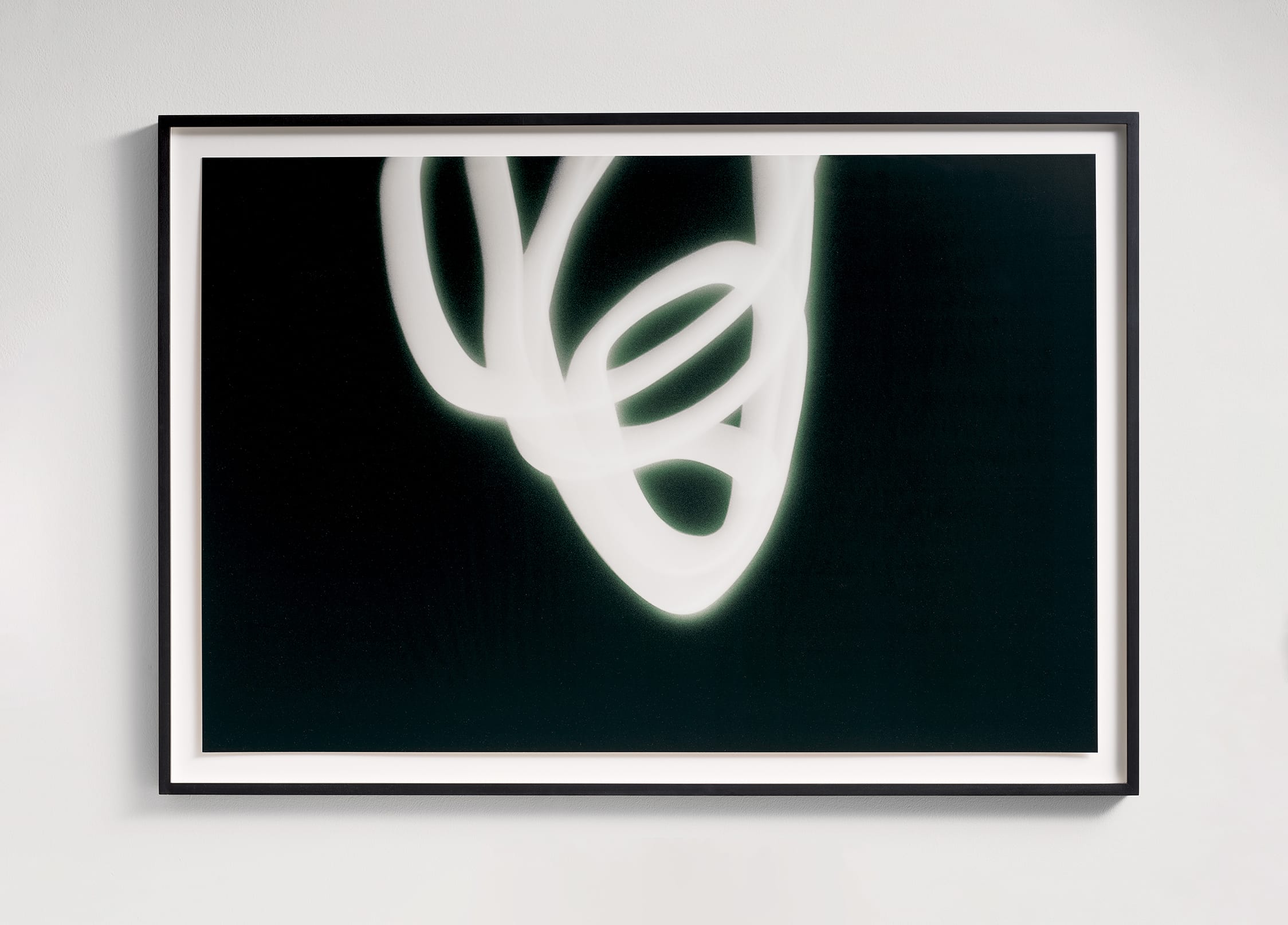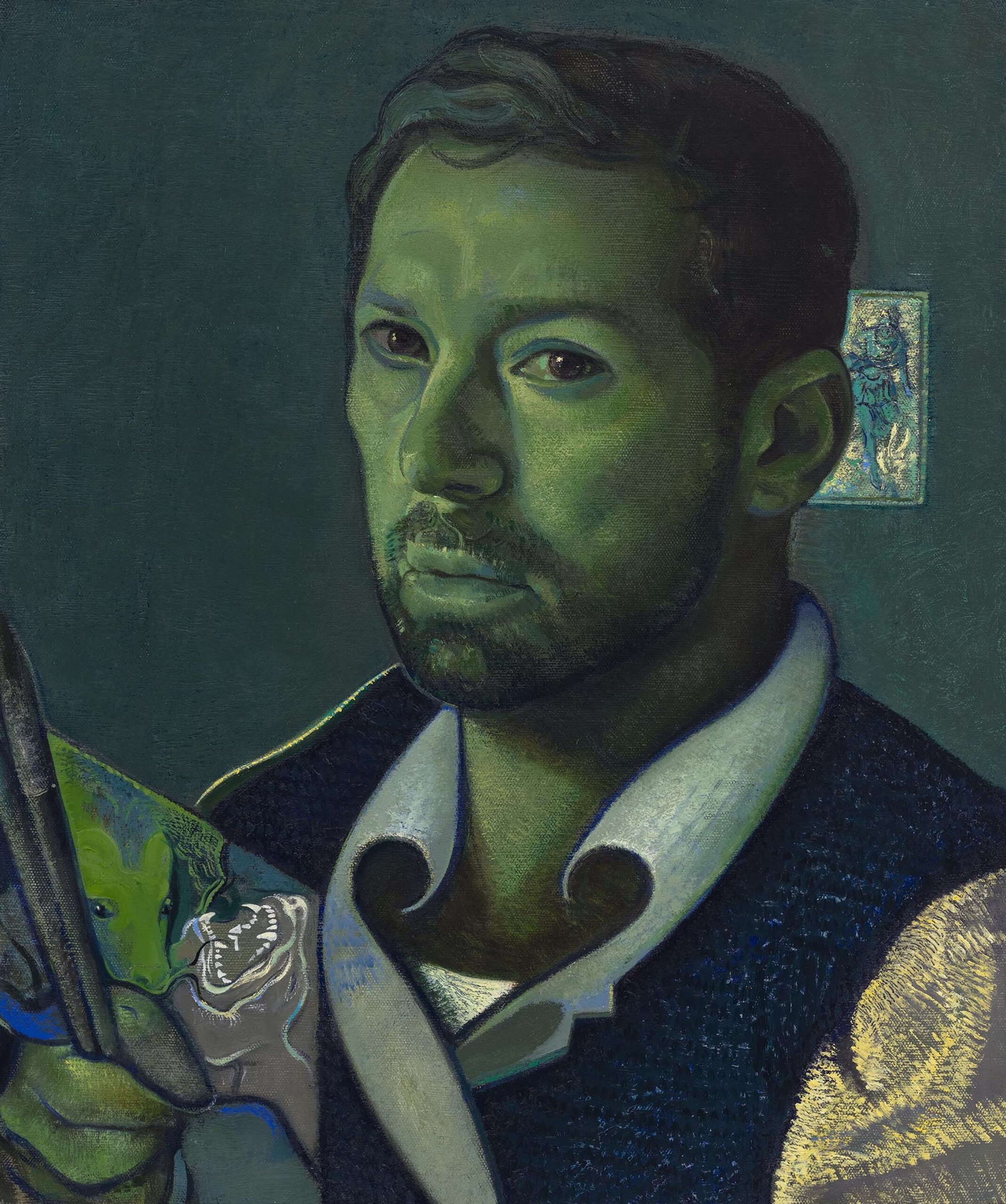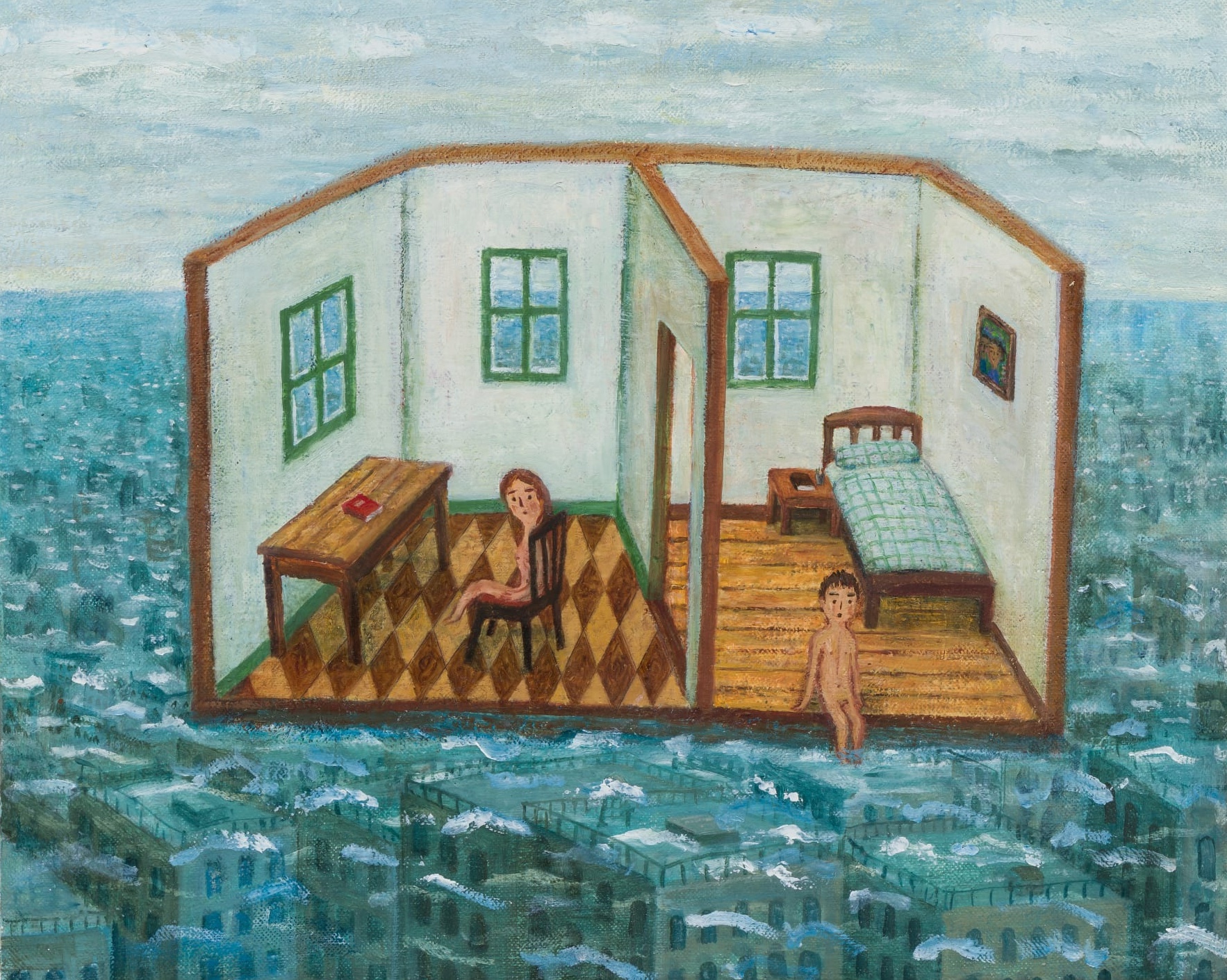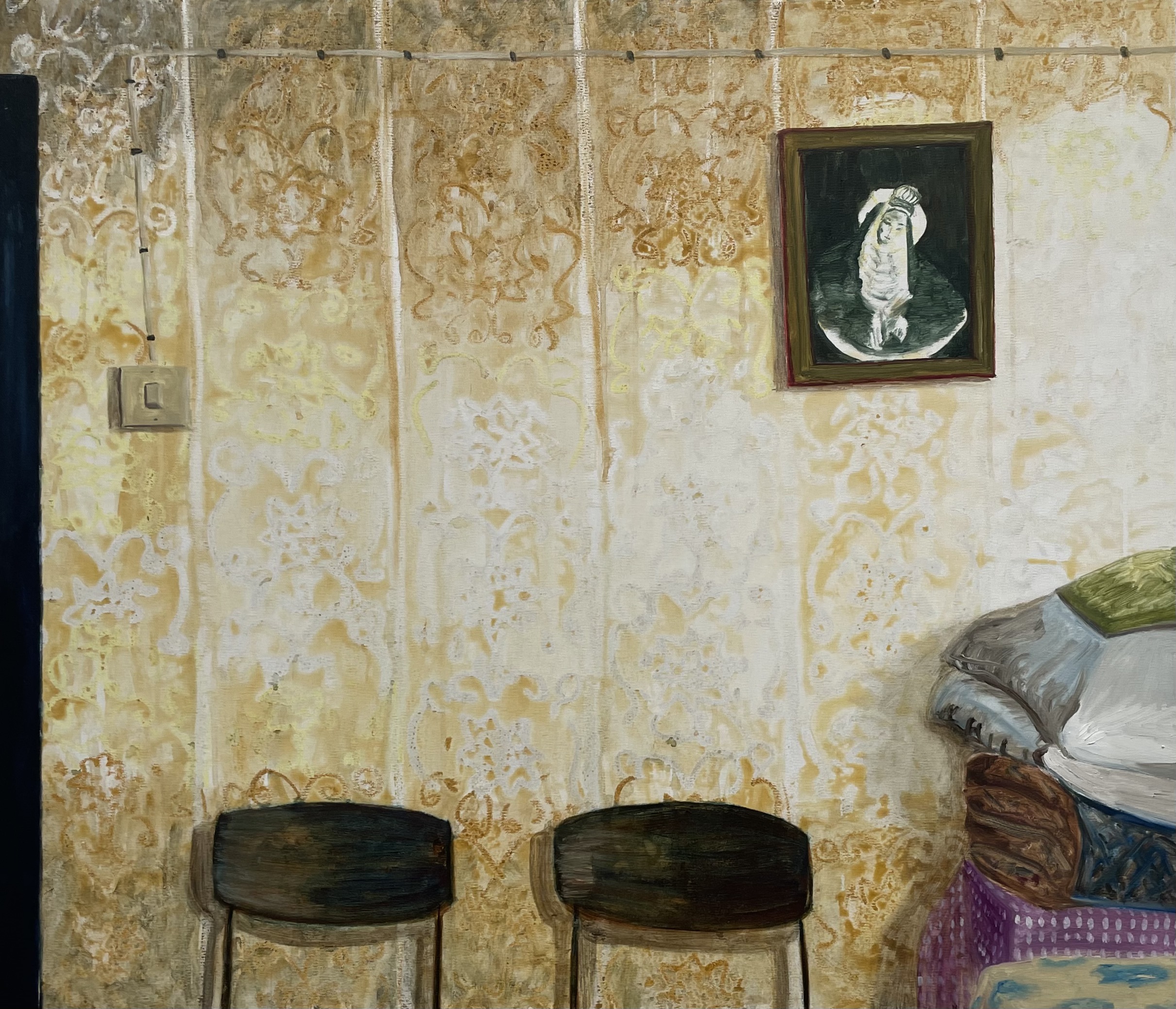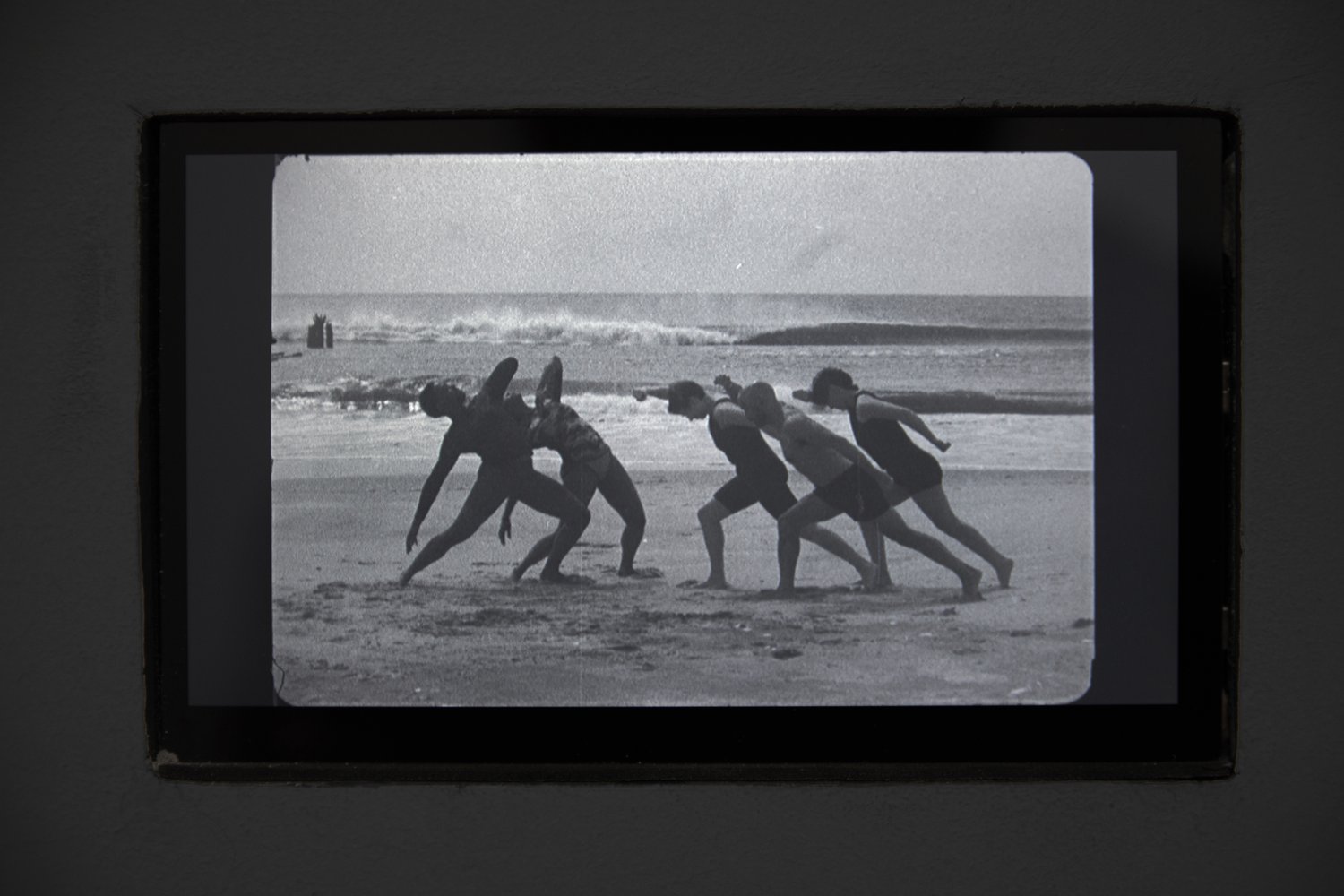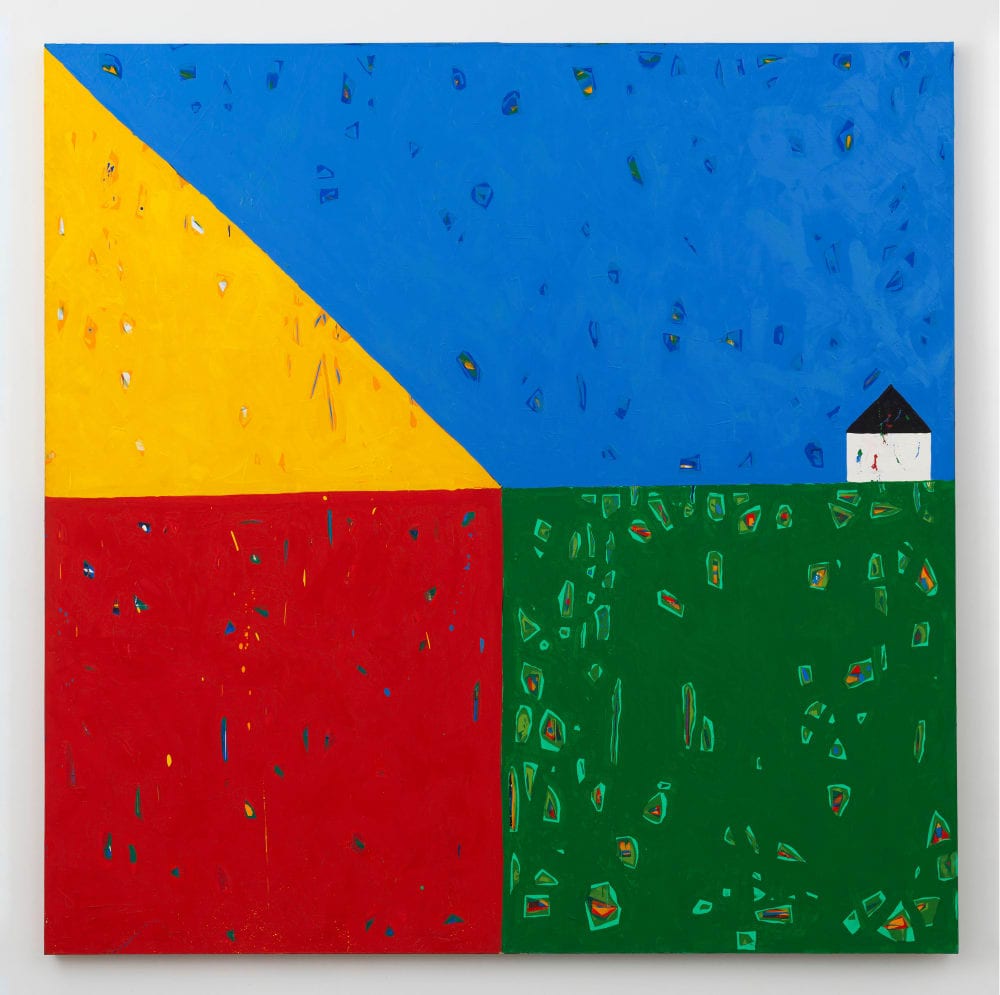notes and notices are short and curt reviews of exhibitions at (mostly) London galleries.
- Tacita Dean
Black, Green, Green and White
★☆☆☆☆Frith Street Gallery, LondonOn until 22 November 2025Phoning it in makes little sense in the age of the WhatsApp message, and film studies lost to video a long time ago. Dean was once good at this transition. This two-segment exhibition – consisting of inconsequential light paintings and film sprocket drawings in the gallery’s main space and a torturous 16mm film portrait of another film master in the basement – makes no effort on behalf of its subjects, let alone the medium.
Dean’s slate drawings and Polaroid doodles relate to Shakespeare, but one wouldn’t know it. One wouldn’t need to because such imagery is perfectly serviceable student dorm decoration. In the gallery, however, it is so quotidian that it barely distinguishes itself from the degree show.
Worse, though, is the forty-minute-long film portrait of the Ukrainian photographer Boris Mikhailov and his wife Vita. The subjects, whom Dean stages in the shadow of Berlin’s Brandenburg Gate, inspire interest inherently. This could have been a tender portrait of an ageing couple’s stillness, or any number of things, really. But Dean gives the Mikhailovs both too little and too much to do in her frame. The result captivates before revealing itself to be dead boring.
To say that Man is preoccupied with death is to make a poor joke. What the artist and the gallery punter share, however, is a profound fear of an unknowable reality. Man, the painter, spent decades coming closer than many to life’s ends and its beginning; his portraits, rendered in rich emerald (or copper), capture men, women, and infants faced with their finitude. Not always, all be it, willingly.
This constellation has Man draw himself into art history’s top trumps: there’s a Vincentian self-portrait, starry night in a Gypsy girl’s hair, with a bunch of (moon?) flowers for good measure. Skulls abound, as do breasts bared for feeding, as though to complete some cycle.
But there is no end in sight, and that’s the rub; Man’s other dealer is down the road, this show’s key painting unsold since the last one. If ‘life’s death’ is what he captures, might the painter’s palette – only a small nudge of the colour wheel separates his work from Tretchikoff’s infamous portrait of the Chinese girl – be but a gimmick?
Houldsworth’s programme doesn’t get the recognition it may deserve, perhaps because so much of it looks ‘outsider’ as a matter of branding. Nakahara’s mix of studied naïveté and accidental surrealism is a case in point. Biblical floods, the comet’s fall, and the odd tsunami mercilessly toss his protagonists about before the painter makes for them a life raft of cherry blossom. The canvases, small enough to protest innocence, are disarming enough. Their sculptural companions, like the pair of child lovers in a birdcage, turn sickly ‘cute’ like a Labubu. They speak over the wind’s rush with childlike ennui of an artist making work solely for himself.
- Cynthia Hawkins
Maps Necessary for a Walk in 4D: Chapter 4
★★★☆☆Hollybush Gardens, LondonOn until 1 November 2025Context is everything, as a judge once proclaimed. That context might need contexts, too, and Hawkins says her canvases throw back to some others, which, in turn, root their ideas in an event now too distant to recall. The verdict? Nice story, but it’s nonsense. Hawkins’s wet paint abstractions – colour washes straight out of the tube, unmixed – transparently overplay reference and recall. Painter’s tape and oil bars – what is being tied to what here? – make for barely circumstantial evidence. Left to her own devices, Hawkins (whose work, in company, was a highlight in the Condo jumble programme) reveals that her studio was no crime scene.
- Grant Falardeau, Rimantė Mikulovičiūtė, Benjamin Sasserson, Bu Shi, Dylan Williams
A light here required a shadow
★★★☆☆Maximillian William, LondonOn until 2 October 2025If the conceit of this show is that darkness reveals, then its obscure palette is unevenly mixed. Mikulovičiūtė’s nostalgias, measured by pigments fading, are masterly: grandma’s linens, fruit from the orchard, and the Madonna construct an interiority hard to convey with light. Falardeau’s busts – a golden Alice and a clay Pan – turn highlights and shadows into erotic charge with a clumsy contrast of human glow and predatory grit.
But the gallery is overexposed; Sasseron’s and Williams’s oils – despite themselves – reveal too much, while Shi’s icon paintings – try as they might – find no still corner for meditation in this company. This is what it is to live a life of full transparency: catch the wrong end of the spectrum and forever remain in the dark.
- Kate Burling, Anna Choutova, Douglas Cantor, Nettle Grellier, Gosia Kołdraszewska, Lydia Pettit, Olivia Sterling, Sophie Vallance Cantor
Cherry Bomb!
★★☆☆☆Miłość, LondonOn until 4 October 2025To hang a group exhibition on the idea that “the cherry throughout the history of art and literature has symbolised dualities” is to risk confusing Chekhov with Nabokov. Cantor’s handsome canvases – white of hearts, red of fruit, black of horses, and so on – show up Pettit’s oily board roundel – red of lips, red of tongue, red of OnlyFans. It, in turn, embarrasses the former. Sterling’s red nipple as the icing-topper does the same to flesh. Grellier, whose simple, faded pencils articulate past summer’s longing as both innocence and the eros, are granted too little stage time to save the assembled company from surplus, such as Kołdraszewska’s graphite cherry-poppers.
Curating to a scheme (and a sales target) hinges on covert abstraction. This exhibition – not for the first time in the gallery’s short history – could have done better if the task were left to a single artist.
The problem for a culture built on iconoclasm is that eventually, it will need to create images of its own. Guthrie is yet to consider this because his image war is still virtual. The subject of his static video installation, as well as of the animated statue-scrapping sequence, is the infamous Blackboy Clock in Stroud. The artist fantasises that the offensive figure has vanished but that he alone might still control its afterlife.
But artists have not been the sole purveyors of aesthetic meaning since the Reformation. In Strud, the statue’s mooted removal has stalled in bureaucracy. Lacking the conviction to climb a ladder and destroy the object himself, Guthrie’s posturing smacks of desperation. The project’s subsidiary poems, press cuttings, and morality tales told as quasi-art history are barren adjuncts to the vilified “retain and explain” strategy. Next to the object itself, they give rise to nothing.
Kyle Mithell’s image archive would make Adam Curtis’ heart sing. Contextless, charged views of people and systems, toned with that pale hue of ‘archive’ give the impression that something profound is extracted from the reels, tapes, and screen-grabs the artists set to Luke Fowler’s ominous soundtrack.
But her hour-long meditation on health, care, and disability – wrapped in musings on the nature of film – feels more like a PhD-by-practice submission than BBC iPlayer fodder, let alone the contents of an art exhibition. The video’s plot is so dense that it takes six pages of writing to explain what connects Zoom movement workshops and the fact that urine, apparently, makes for a decent film developer solution.
There is some tenderness to the edit, but it hides under poorly articulated complaints and a cliché warning against eugenics. When even Curtis has stopped narrating his ‘documentaries’, some stories are wasted breath.
Everything turns to dust: there are many ways to misunderstand entropy. Drew piles up charred and stained wood boards as though to assemble a mountain. Then he does it some more, all the while claiming that this toil finds its own meaning.
That it would is a contradiction in terms. If it does, it’s not in the gallery and not for the viewer. The stack-it-high excess of Drew’s installation aims for spectacle, but its matter is too predetermined to spark revelation. Its smells and textures, likewise, are too obvious and too done already to deceive the senses into oblivion.
The whole get-up’s a ruse, anyhow: a parallel show in the artist’s commercial gallery revealed that the disorder of Drew’s installation work is a side-hustle to cutesy colour-coord grids. It’d take some grand physics to turn the two projects into a before-and-after cartoon strip.
“Sky”, “roof”, “31”, a mantra turns into paint. There is a poverty to the language confronting a practice like Bartlett’s – either methodical and repetitious, or verging on the clinically obsessive – that dwells in the personal. Bartlett spent decades assembling triangles and squares on the canvas, painting her childlike structures by numbers, before, in turn, arranging those in a sequence. The exaggerated relevance of “house” to someone who (aside from living in one, duh) was a painter becomes a method of madness, stripping the artist of calculation and sheer bloody-mindedness. Would another dictionary – think in Hanne Darboven’s Plattendeutsch, for example – have turned this house into Babel?
Inspired in form and attitude by Manhattan Art Review.
